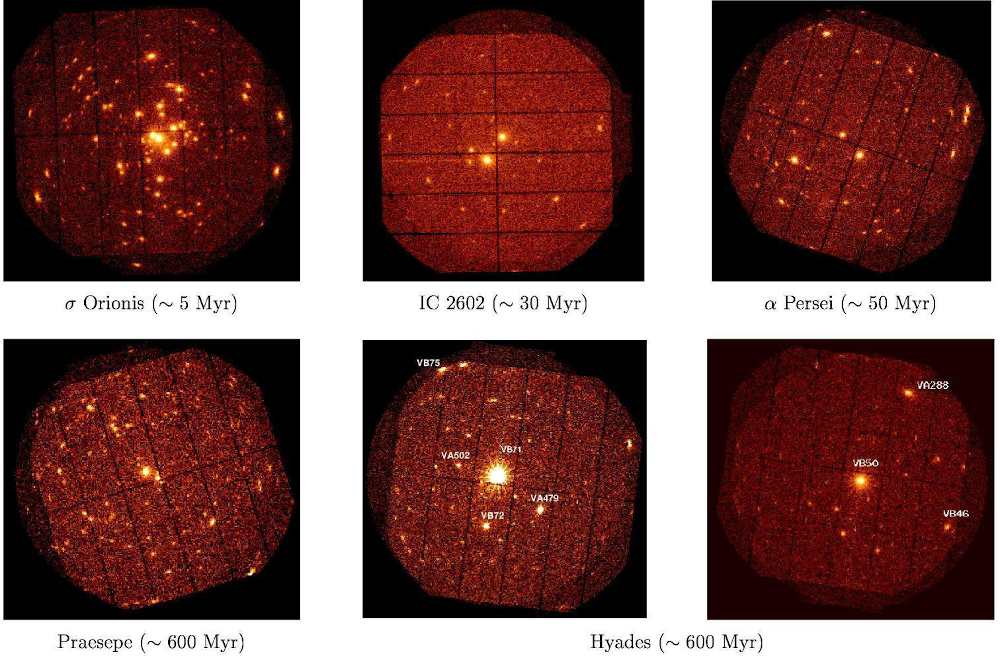
 Credit: ESA/XMM-Newton
Credit: ESA/XMM-Newton
A Cluster of Clusters
Stars are fairly gregarious, and are often found bunched together in groups. Some of these star groups are long lasting, held together by the mutual bonds of gravity. Other groups are more ephemeral, composed of stars moving too fast to remain bound to the group for very long. Observations of star clusters have played key roles in our understanding of the Galaxy and the wider Universe. Simple plots of the brightness versus colors of stars in clusters provided the first important insights into how stars grow and evolve, and helped establish the age of stars in the Milky Way and beyond. X-ray observations of star clusters have been particularly important, since X-ray studies can be used to distinguish cluster members from foreground and background stars, find young members still swaddled in thick clouds of gas and dust, determine populations of compact objects left behind by cluster members that have expired and show how stellar activity varies for stars of different brightness and mass. The image above is a montage of a few X-ray observations of well-known galactic star clusters both young (formed a few million years ago) and older (600 million years), obtained over the years by the XMM-Newton X-ray observatory. Comparison of X-ray cluster observations demonstrate how young, fast-spinning stars have enhanced high-energy activity which fades with time, a key point for understanding when how and where habitable planets can form.
Published: April 25, 2022
<
HEA Dictionary ● Archive
● Search HEAPOW
● Other Languages
● HEAPOW on Facebook
● Download all Images
● Education ● HEAD
>

Each week the HEASARC
brings you new, exciting and beautiful images from X-ray and Gamma ray
astronomy. Check back each week and be sure to check out the HEAPOW archive!
Last modified Tuesday, 27-Feb-2024 10:10:01 EST


